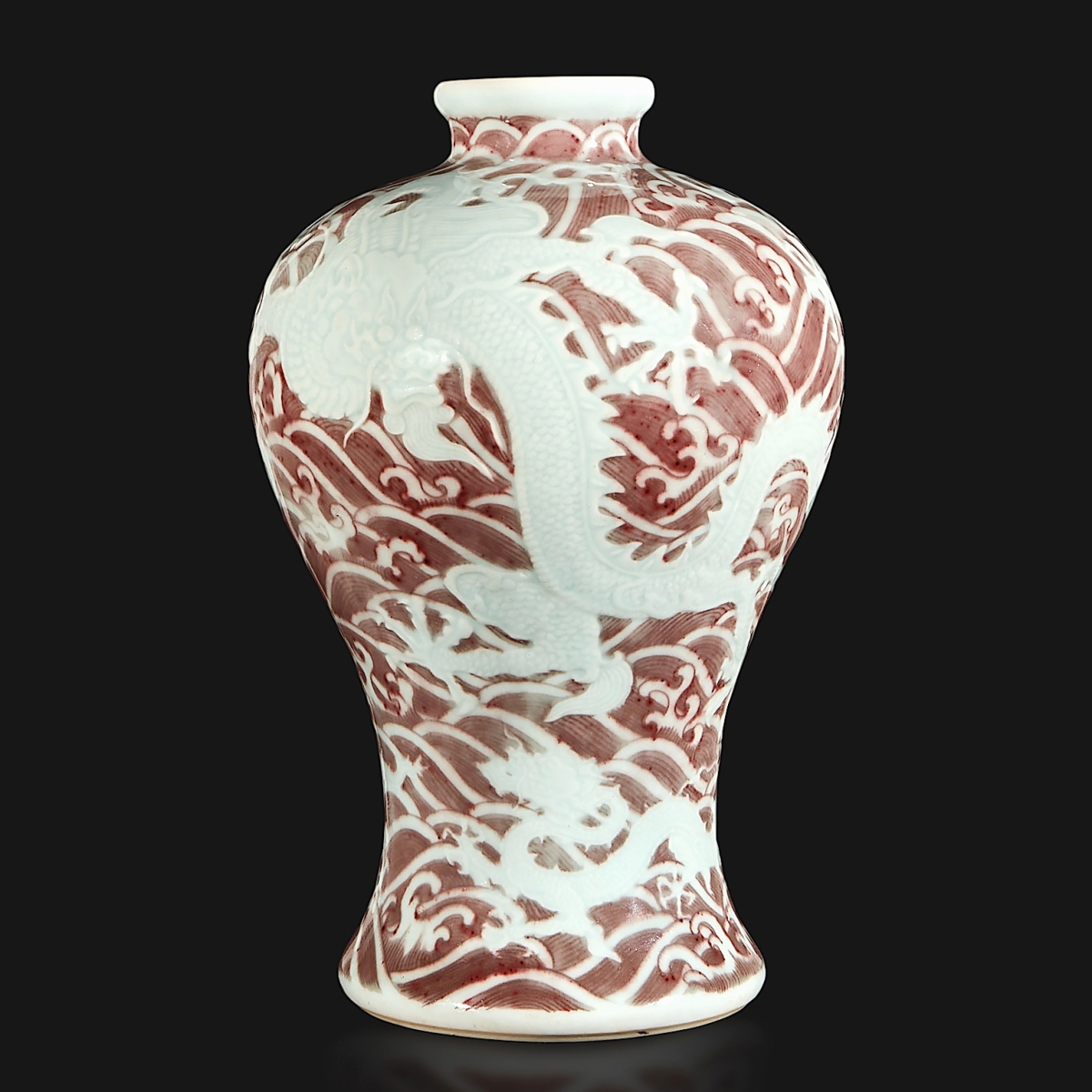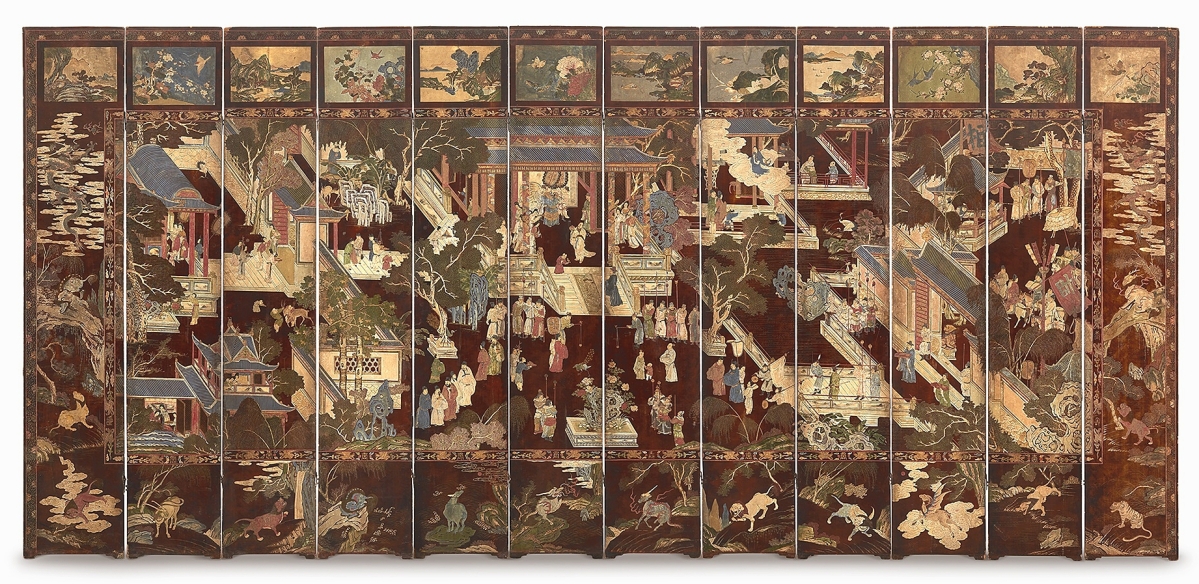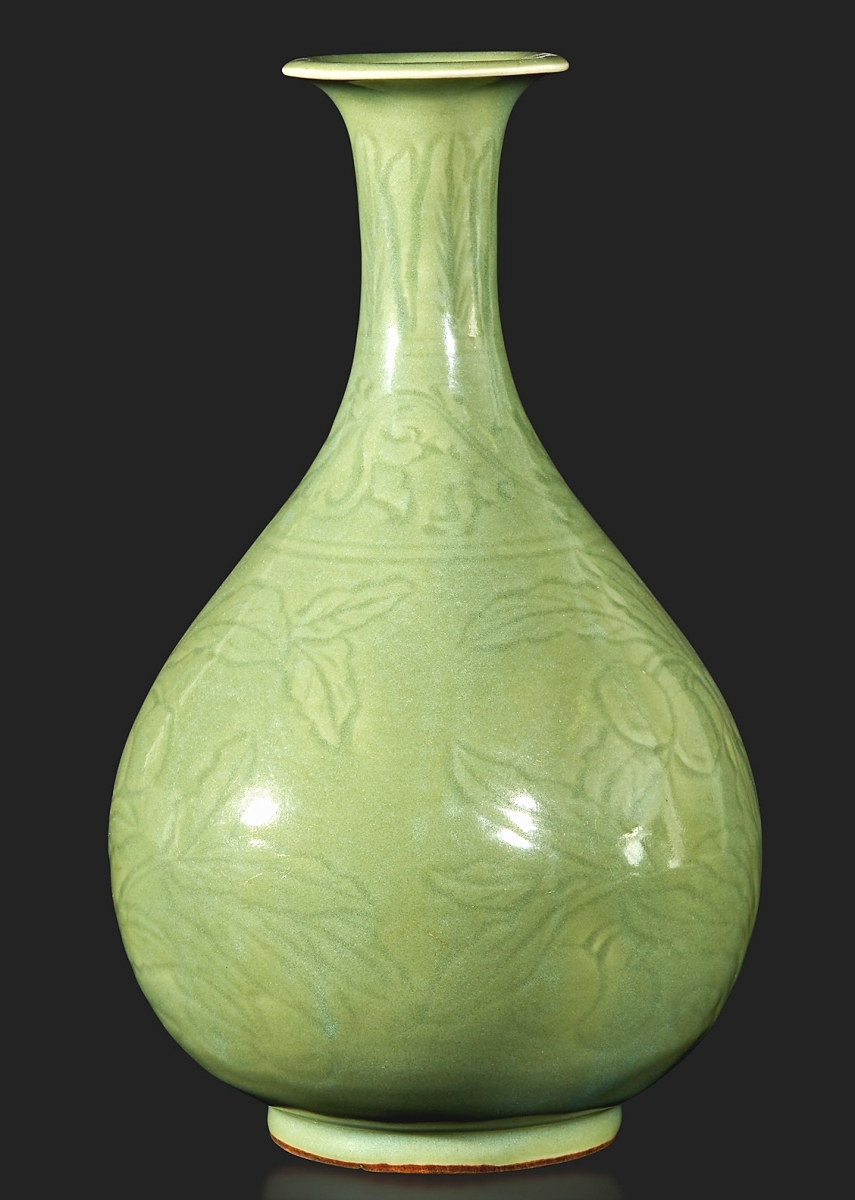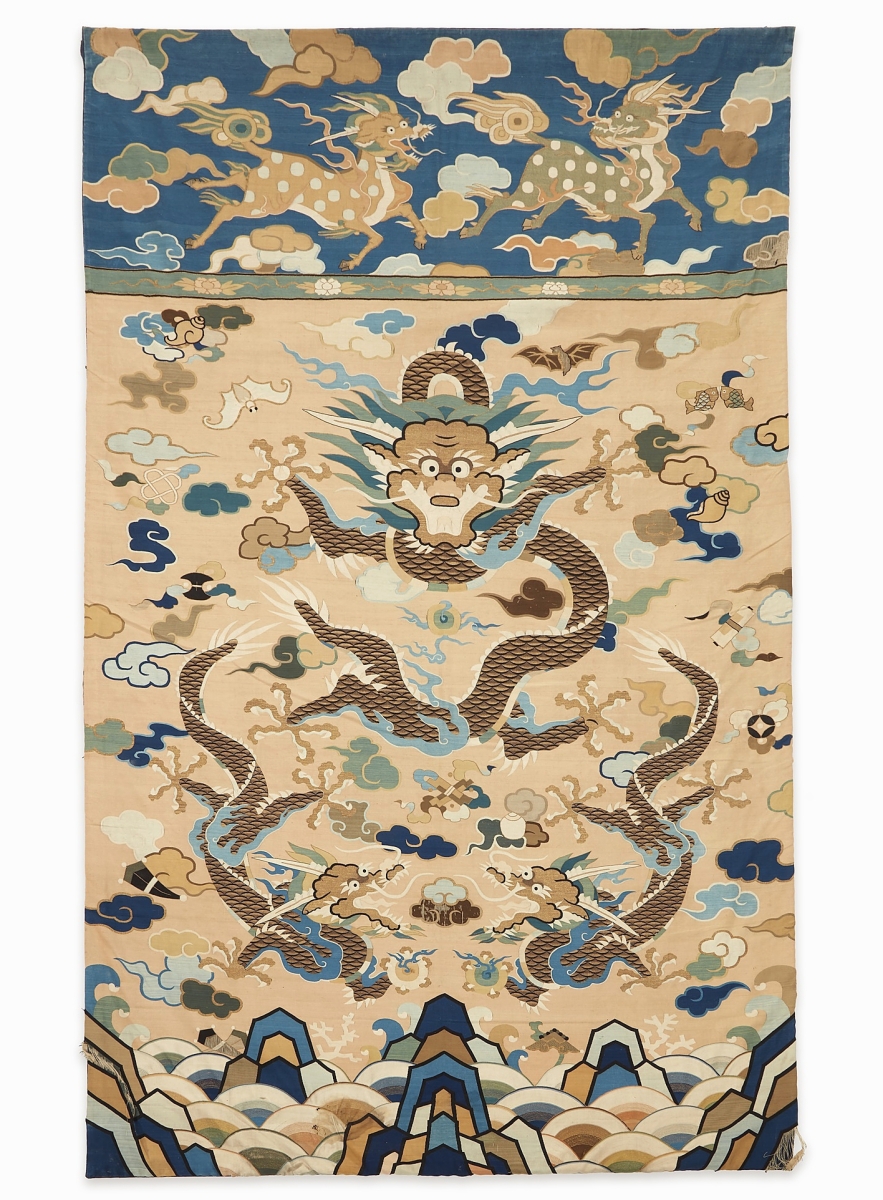
This carved and underglaze red “dragons and waves” vase, Meiping, Yongzheng six-character mark and period brought the top price of the sale. It stood 11- inches tall and had been in the collection of Sheelah M. Langan (1910-1993); it sold to a phone bidder who prevailed against several other phone bidders, for $2,316,000 ($150/250,000).
Review by Madelia Hickman Ring, Catalog Photos Courtesy Freeman’s
PHILADELPHIA – It is always a good thing when a high price is realized early in an auction. That was the case in Freeman’s April 8 Asian works of art sale, when the 12th lot to cross the block achieved what would amount to about three-quarters of the final sale tally. A Chinese carved and underglaze red “dragons and waves” Meiping vase achieved $2.31 million against an estimate of $150/250,000. It was far and away the highlight of a sale that saw strong results in every category, made more than $3 million in total results and 91 percent of the 138 lots found buyers. Bidders in the sale hailed from 18 international countries, including China, Japan, Korea, Singapore and Taiwan.
“We’re absolutely thrilled that Freeman’s was able to offer such a fine and well-curated collection of Asian art, including various porcelains, jades and other works of art,” remarked Ben Farina, the head of Freeman’s Asian Arts department. “We were particularly delighted by the reception and performance of the Meiping dragon vase, and feel fortunate to have been entrusted with a number of heirloom collections, which were passed down through several generations.”
But back to the vase. It had descended in the collection of Sheelah M. Langan (1910-1993), who had served in the United States Foreign Service and received postings in Rome, Bangkok, Tripoli, Rabat, Athens, London, Bogota and Mexico City in a career that spanned from World War II to 1970. It was being sold by her family, who Farina said after the sale was “absolutely thrilled.”

“That was a really fantastic example and I’m thrilled it did so well,” Ben Farina said of this Seventeenth or Eighteenth Century Chinese carved 12-panel coromandel folding screen. It was finely executed and in very good condition. Competition was stiff and it sold to an international phone bidder for $85,050 ($20/30,000).
According to the catalog note, the vase is a “rare example of a small group of wares made for the Yongzheng court, inspired by Yongle period (1402-1424) porcelain prototypes, themselves based on Yuan styles of decoration, which feature reserved dragons carved in low relief against a ground of crashing waves executed in variations of underglaze blue and red.” A few comparable examples were cited, one in the collection of the Palace Museum in Beijing; one in the Metropolitan Museum of Art; one that was part of the Stephen Junkunc collection at the Cleveland Museum Of Art, Ohio; and one formerly in the collection of the Manno Art Museum, Japan, which sold at Christie’s, London, in 2001. Also noted was the theme of small and larger dragons, which some considered to reflect the importance of teaching the young and raising one’s family to prominence and success.
All of the competition for the vase, which stood 11-1/8 inches tall, was on the phones. Bidding was electrified by an opening bid of $1.2 million and it went from there. At press time, Freeman’s was not authorized to divulge the identity of the buyer.
Bringing the second highest price of the day at $85,050 was a Seventeenth or Eighteenth Century carved 12-panel coromandel folding screen. The front of the screen depicted a busy scene of figures, immortals, animals, birds and foliage in a landscape while the back had a lengthy calligraphic inscription with a transcription of a song that was composed during the Western Han dynasty and the seals of the calligraphers. Screens like this were apparently very popular in China in the late Seventeenth and early Eighteenth Century, and were often given as gifts to commemorate important occasions, and many were exported to the West. This screen had provenance to a private New York collection. Farina said it was the sort of thing that had been very popular among decorators because it added a colorful, narrative aspect to an interior. After “quite a bit of competition,” it sold to an international buyer bidding on the phone.

This Chinese Longquan incised celadon-glazed bottle vase, Yuhuchunping, Ming dynasty, Fifteenth Century achieved $69,300 and the third highest price in the sale. Farina said it was a really wonderful piece in very good condition. An international buyer was the winning bidder ($20/30,000).
Rounding out the third highest price of $69,300 was a Fifteenth Century Ming dynasty Chinese Longquan incised celadon-glazed bottle vase that was the second lot in the sale and also sold to an international buyer. Farina noted that the incised design – that of two fruiting sprays that may have been loquats – was quite unusual and it was also in very good condition. The provenance was listed as a private American collection that had descended to its current owner.
The dragon motif was sprinkled throughout the sale and helped push a kesi tapestry panel to the top of the textile category. The catalog noted similar examples in the Victoria and Albert Museum as well as a few that have come to market in recent years, with the one Freeman’s was offering being much larger and more compositionally complex than those. The piece had descended in the family of Augustus Thorndike Perkins (1827-1891) to the mother of the present owners. It had hung for many years in the family’s Cape Cod summer house, “Sandanwood,” in Cotuit, Mass., which had been built in 1863 by Perkins, the heir to an East India trade fortune. It roared to $63,000, more than four times its high estimate.
Several lots were from another old American family collection, that of Eldridge Reeves Fenimore Johnson (1899-1986), who was an explorer, yachtsman, researcher and a pioneer in the development of underwater photography. Johnson was the son of Eldridge Reeves Johnson (1867-1945), the founder of the Victor Talking Machine Company, which later became RCA. In the catalog, it noted that works may have been originally acquired by the elder E.R. Johnson, who gave Chinese works of art to the University of Pennsylvania Museum in 1920 and 1927, including the large crystal ball said to have belonged to the Dowager Empress Cixi, the pair of carved stone reliefs of the favorite horses of the Tang Emperor Taizong, and numerous jade and coral carvings. Among works from the Johnson collection was a Qing dynasty Chinese carved white jade “boys” vase and cover that sold to an overseas buyer for $27,720.

“It was very grand in scope,” Ben Farina said of this large kesi tapestry “Dragons” panel that had descended in the Cape Cod family that had been involved in the East India trade. It brought $63,000 ($12/15,000).
A Chinese carved amber figure of a sage and acolytes was also from the Johnson collection, as was a Chinese carved jadeite meiren. The amber figure of a sage and acolytes sold to an American buyer for $25,200, while an American trade buyer paid $22,680, nearly ten times the low estimate, for the jadeite meiren.
The majority of the sale was Chinese works, but there were still pieces of Japanese and Korean origin. Topping the former was a Japanese Meiji period cloisonné cabinet vase on wood stand made by Namikawa Yasuyuki. Farina said that despite its small size – just 5¼ inches tall – the quality was extraordinarily high with exceptional execution and colors. It brought $18,900 from an international buyer.
A pair of Korean mother-of-pearl inlaid and lacquered wooden chests set the high bar of $10,080 for a Korean object. The chests, which had an inlaid hexagonal “tortoise” pattern, had been owned by Owen Nickerson Denny (1838-1900), who had been the Consul General to China from 1877 to 1884 and the advisor to the Korean court from around 1885-1890. It is believed Denny acquired them when he was in Korea. Subsequent provenance for the pair included J.D. de Vries of New York and Mr H.L. Simmons, whose family was selling them.
Prices quoted include the buyer’s premium as reported by the auction house.
The date for Freeman’s next Asian Art sale has not been set but will likely take place in the fall.
For information, 215-563-9275 or www.freemansauction.com.





















